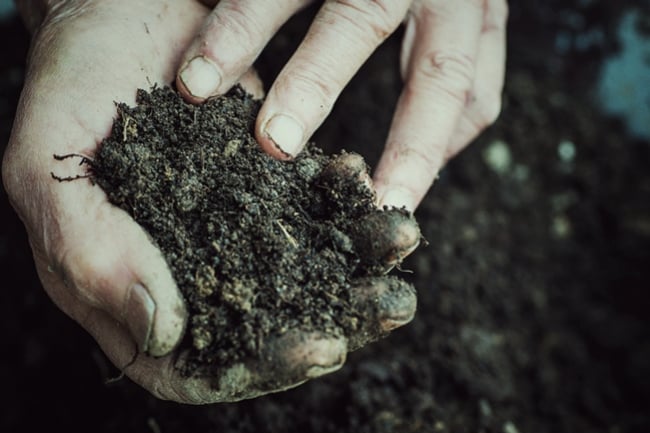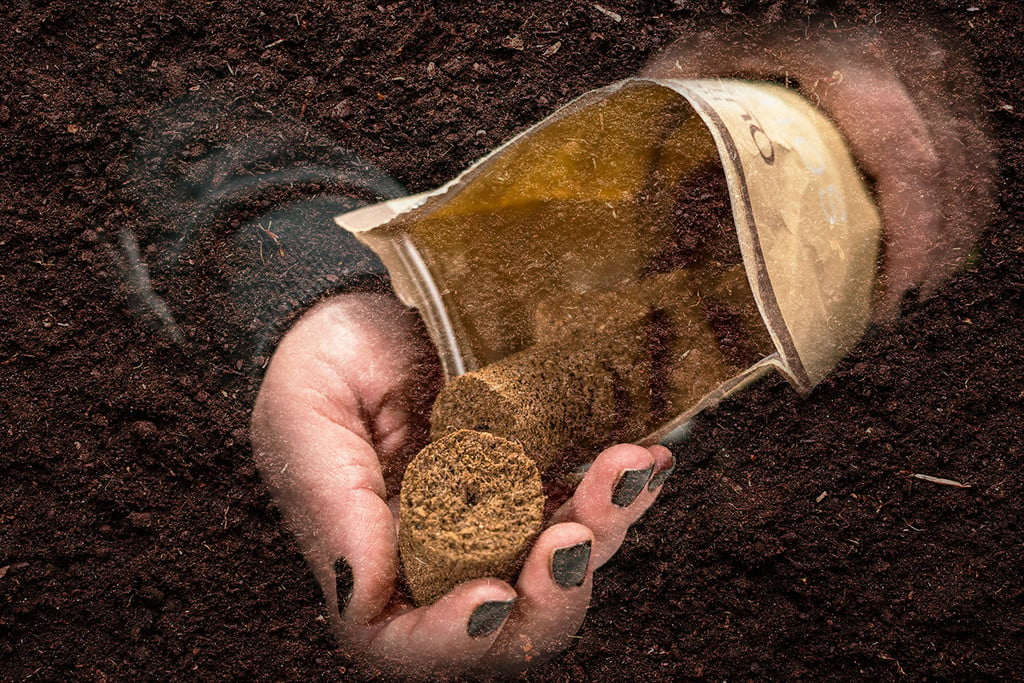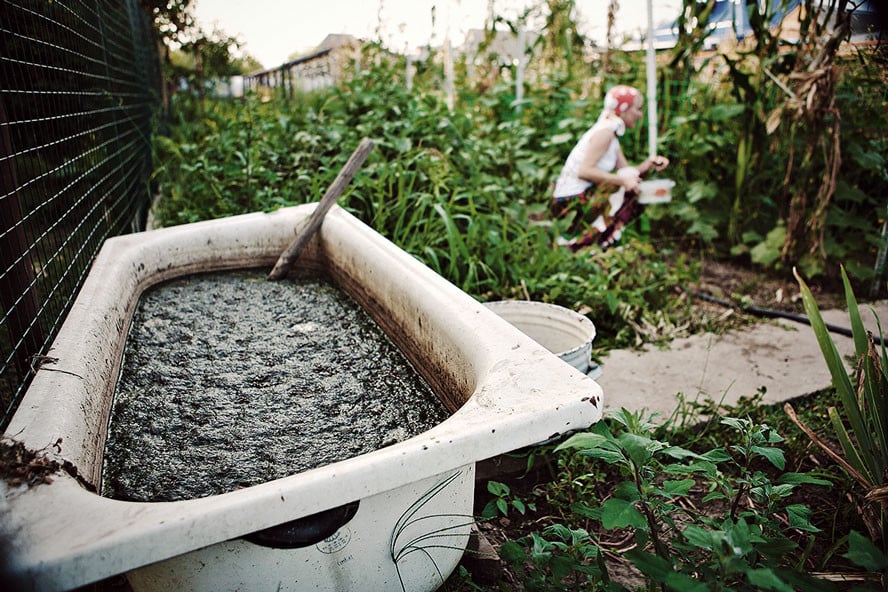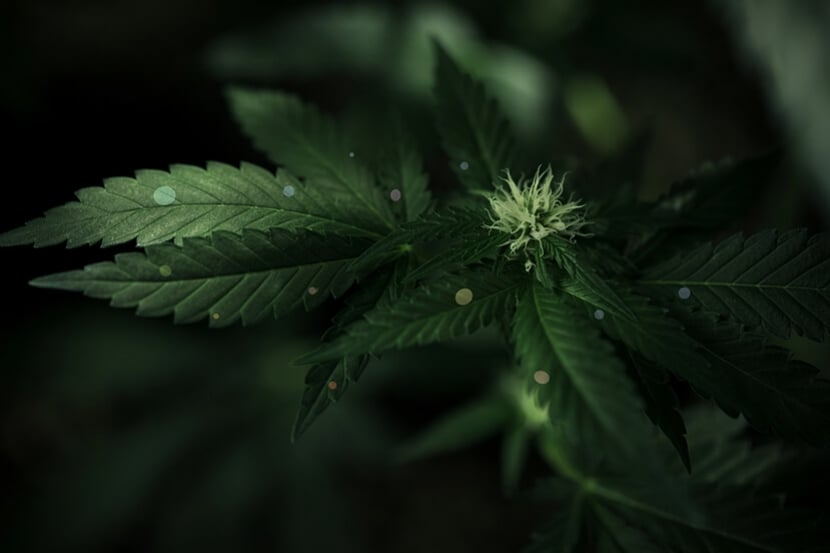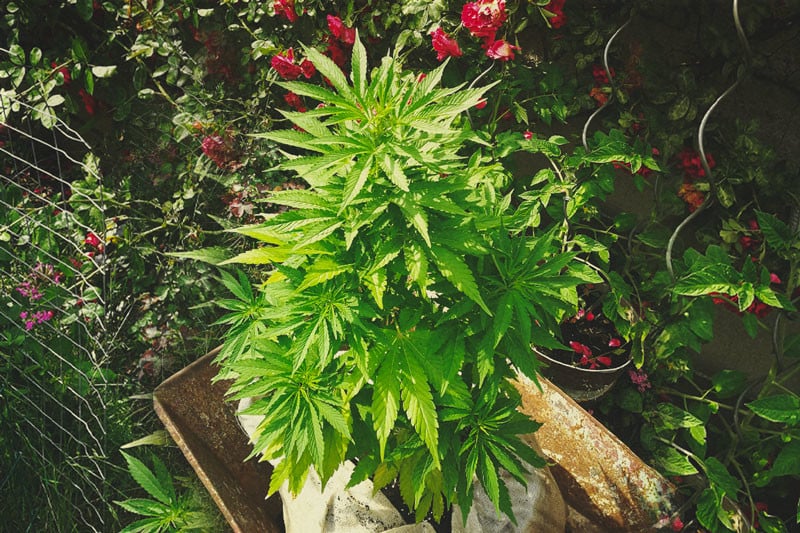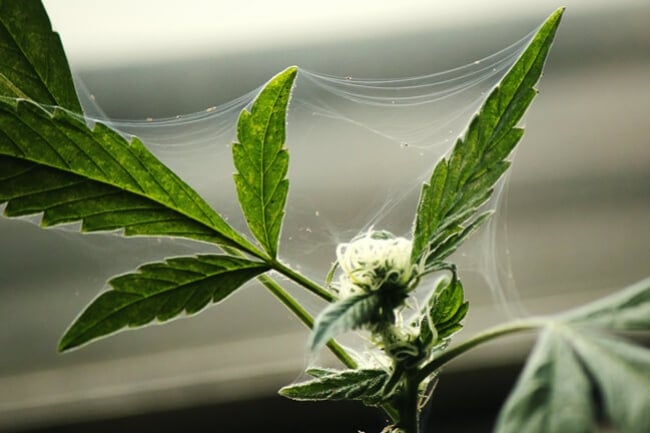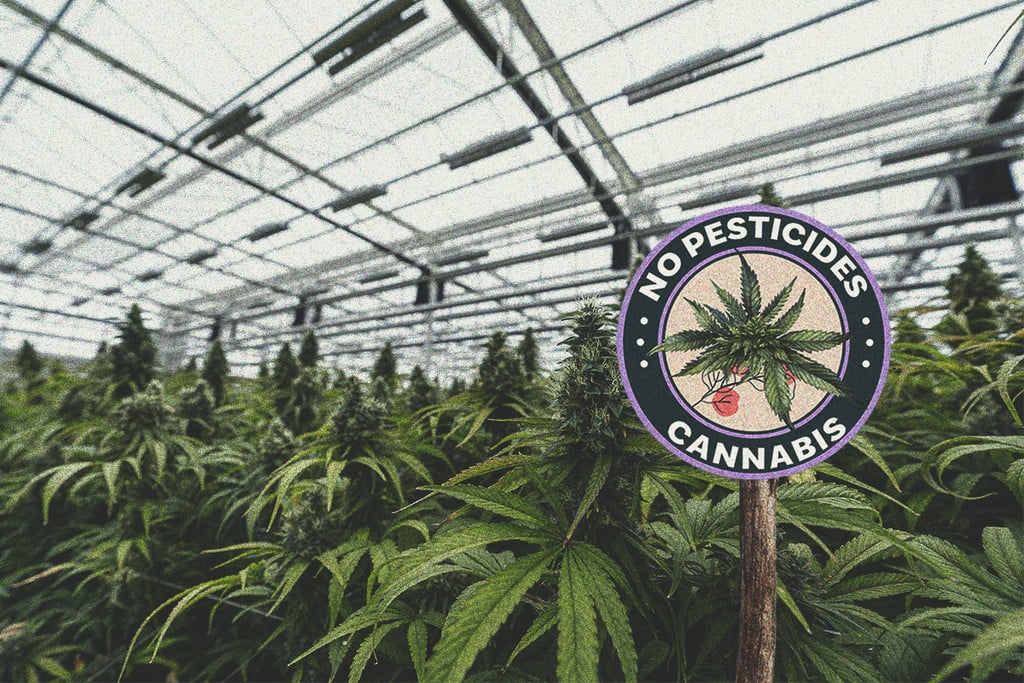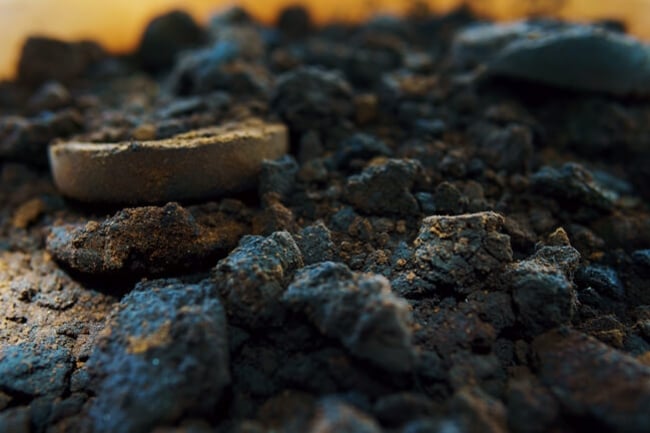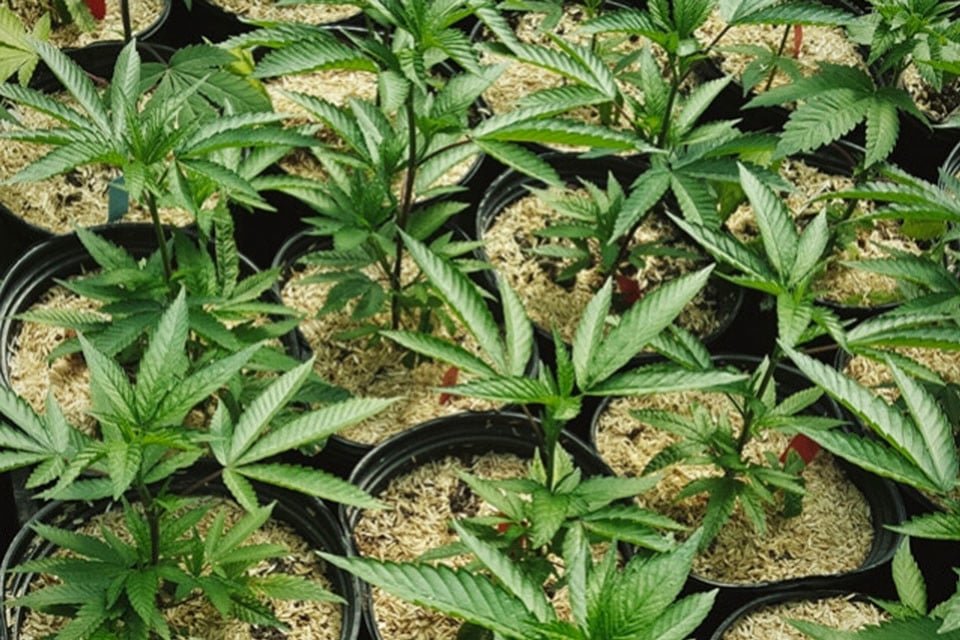.
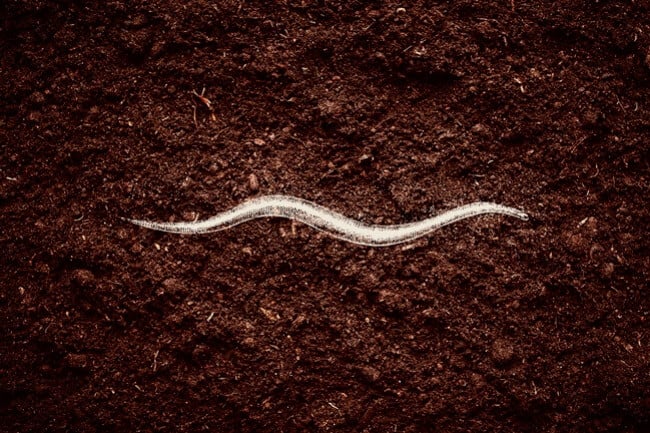
Everything You Need to Know About Nematodes as a Cannabis Grower
Nematodes are microscopic worm-like creatures that live down in the soil. Some of them eat fungi and bacteria, some eat other nematodes, and some even chew through cannabis roots! Obviously, growers don't want the latter in their soil. Thankfully, you can use good nematodes to fight off the bad. Find out more about these critters below.
Did you know that organic soils are teeming with life? Among the myriad creatures that live around cannabis plant roots, nematodes play a notably important role. They roam around consuming bacteria, fungi, and even other nematodes, and enhance soil fertility as a result.
Some nematodes can do serious damage to plant roots, but applying the good guys will help to fix this. Find out everything you need to know about nematodes, and how they relate to growing good weed, below!
Contents:
An Introduction to the Soil Food Web
Gone are the days of pouring bottled synthetic nutrients into lifeless soil and hoping for the best. Instead of viewing the growing medium as nothing more than an anchor point for plants, contemporary weed cultivators are waking up to the fascinating and revelatory advances of soil science—soil is alive, and it helps plants if we treat it accordingly!
To give you a quick impression of the magnitude of life within soil, know that a single teaspoon of the stuff contains around 1 billion bacterial cells of around 10,000 different species—and that’s just the bacteria!
Soil also houses many other microscopic lifeforms, including fungi, algae, yeast, nematodes (more on these little guys below), and microarthropods. Larger organisms, such as worms and insects, also play a crucial role in this living matrix of life.
The term “soil food web” refers to a lattice network of food chains that all entangle and intercept, creating a complex flow of nutrient cycling. The big things eat the little things, poop out their nutrients, and ultimately keep plants well-fed while improving the structure and fertility of the soil.
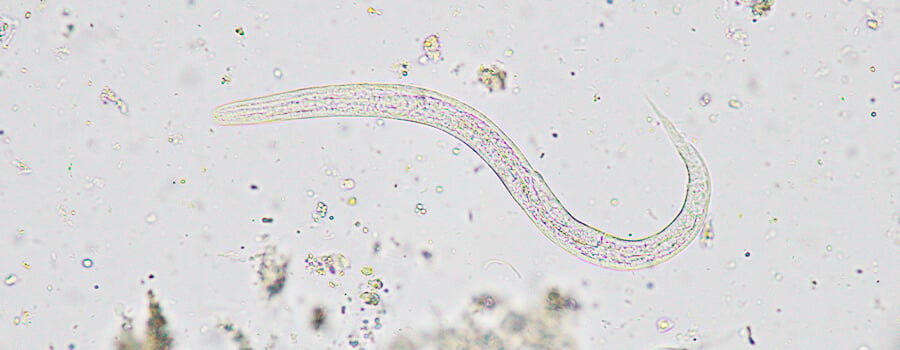
Research in this field has revealed that growers have an important choice to make. They can either blitz the soil with synthetic nutrient salts and pesticides, leading to short-term yields but decreased soil quality over time. Alternatively, they can ditch the nasty chemicals and opt for applications of organic matter and probiotics to exponentially increase fertility and yield.
To successfully cultivate living soil, it helps to get to know each member of the soil food web in detail. Discovering their form and function will help you set apart good guys from the bad and equip you with strategies to help your plants thrive. Below, we’re going to dive deep into the tiny wriggly creatures known as nematodes.
What Are Nematodes?
Good question! If you’ve never heard of nematodes before, it might surprise you that they’re one of the most abundant animals on Earth. Also known as roundworms, they’re any of the organisms that fall into the phylum Nematoda. Some live as parasites inside animals and plants, whereas others live freely in the soil and prey on smaller organisms such as bacteria and fungi.
So, what do they do in the soil? And are they welcomed guests or unwanted invaders? Well, it depends on the type of nematode. Many of these microscopic species are a valuable addition to a living soil system. By preying on smaller life forms and serving as prey for others, they help to promote nutrient cycling and decomposition—two processes that help nutrients flow into your plants.
Not only do nematodes hunt down microbes and turn them into fertiliser, but they themselves are turned into nutrients by other organisms. Several species of fungi have developed cunning ways to hunt down nematodes. These strategies include using their hyphal strands to trap[1], poison, and even harpoon nematodes before releasing enzymes and externally digesting them.
How do Nematodes Affect Cannabis Plants?
Now you’re clued up on the soil food web and the role that nematodes play in it. But how do these small wriggly organisms affect your cannabis plants and the soil they grow in? To find out the answer to this question, we need to separate the good from the bad. Check out some of the most important types of nematodes below, and how they positively or negatively impact weed plants.
Types of Nematodes
Different types of nematodes eat different types of food down in the soil. Because of this, they possess different biological structures that help them process their prey of choice. Most of them help to ramp up nutrient cycling and therefore soil fertility. However, some types of nematodes have the annoying trait of munching through cannabis roots.
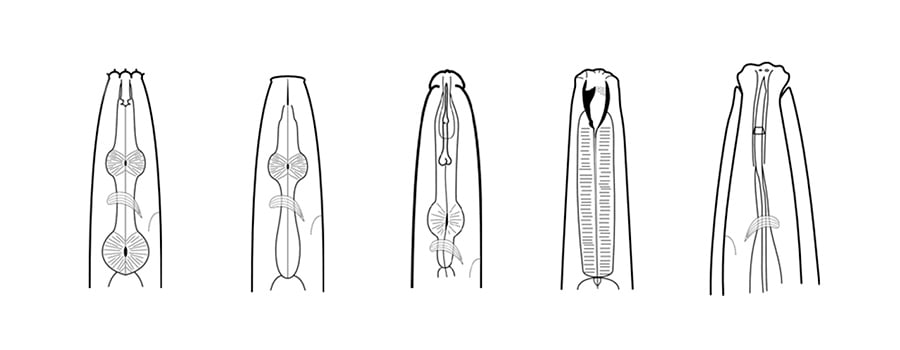
Fungivores
This group of nematodes secure a steady flow of calories by hunting down and chewing on fungal threads in the soil. Remember how we mentioned that some fungi kill nematodes in the soil? Well, it’s a bidirectional microbial bloodbath. These predators are equipped with a piercing needle (called a stylet) within their mouths that allow them to penetrate fungal threats and suck out the juicy innards.
Bactivores
Much like the fungivores, bacterial-feeding nematodes are also predators that patrol the rhizosphere in search of prey. However, they possess different mouthparts that enable them to specialise in consuming bacteria. Instead of a stylet, they possess a tube-like structure.
Saprophytic Nematodes
If you’re a bit of a mycology nerd, you’ll have come across the term “saprophytic” at some point. It refers to organisms, such as many species of fungi, that earn their lunch by rotting down organic matter, including logs and leaf litter. Saprophytic nematodes work hard to break down naturally-occurring organic matter, or that intentionally laid down as mulch.
Predatory Nematodes
These nematodes have a slightly bigger appetite in that, instead of chowing down on smaller microbes, they hunt and devour other nematodes. They prowl through the soil in search of larger nematodes. Once located, they scrape away at their outer layer until they reach the succulent inner material—lovely! They seem brutal but come in handy when dealing with less desirable nematodes in the soil.
Plant Parasitics Nematodes
These are the bad guys. Vegan in nature, they turn their nose up at other microbes and instead choose to dine on plant roots. In doing so, they damage the apparatus responsible for up-taking nutrients, oxygen, and water. They also open up passageways for pathogenic fungi to enter the roots and begin rotting them away.
Plant Parasitic Nematodes: A Problem For Weed Growers
Although roots remain entirely concealed throughout the growing cycle when raising plants in soil, they play a fundamental role in cannabis plant growth. More than just mere tendrils that suck up nutrients, they serve as a bidirectional interface between plants and the microbial populations of the rhizosphere.
Plant roots pump out a huge portion of the carbohydrates that they make during photosynthesis into the surrounding soil. They also include amino acids and other important compounds in their sticky exudates. Why? Simply put, they farm microbes.
Yep–these delicious creations attract an array of microbes to the root zone. Here, roots physically fuse to and form an alliance with mycorrhizal fungi. They also consume entire bacterial cells whole during the rhizophagy cycle[2]. After gobbling them up, they strip down their cell walls through oxidation, harvest their internal nitrogen, and release them back out into the soil. This is how root hairs are made! Exiting bacteria spark the growth of root hairs, key structures found lacking in plants left without inoculation in lab conditions.
So, a lot happens down in the root zone. It makes total sense that hungry plant parasitic nematodes can throw off this intricate cascade of events through their tireless munching. When they get a secure foothold (or tail hold), they can cause some serious damage, resulting in stunted growth and reduced yields.
The Symptoms of Plant Parasitic Nematodes
Through damaging the root system and disrupting dynamics in the rhizosphere, plant parasitic nematodes cause the following symptoms to arise:
- Stunted growth
- Yellowing and wilting
- Leaf curling
- Leaf spots
- General decline in plant health
- Reduced yield
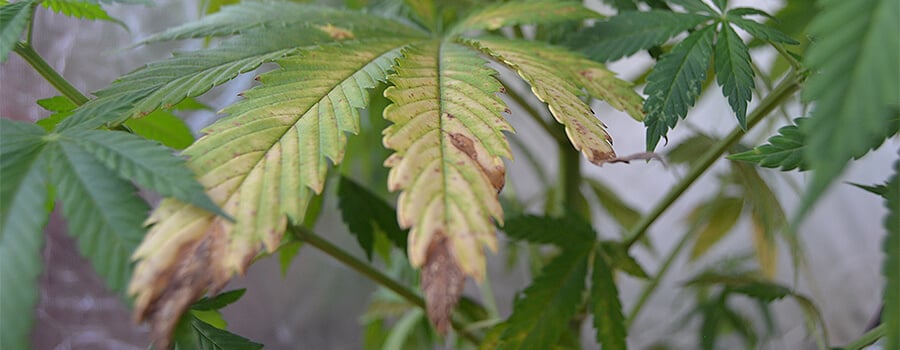
How to Combat Plant Parasitic Nematodes
You could take the nuclear option and start blasting your soil with nematicides. But remember, there are beneficial nematodes in the soil that help your plants thrive. Instead of drastically reducing the fertility of your soil, choose to fight life with life!
There are an array of biocontrols that are effective at combating plant parasitic nematodes. Remember the predatory species we mentioned above? Apply these to your soil, and you’ll unleash a swarm of hungry critters that will intentionally seek out the root cause of your problems. You can easily source predatory nematodes[3] from garden centres or online.
Other organisms also come into play when fighting plant parasitic nematodes the natural way. Applications of mycorrhizal fungi[4] and trichoderma also show promise in defeating this small but substantial foe.
Predatory Nematodes: Biocontrol in the Cannabis Garden
Predatory nematodes don’t just come in handy when dealing with root munchers. They can also help to combat a host of other pests when growing weed. Below, you’ll discover several species of these soil nematodes and how to use them.
The Types of Predatory Nematodes
The main types of beneficial predatory soil nematodes include:
- Steinernema feltiae: This little critter can help to tackle the likes of fungus gnats and thrips.
- Steinernema carpocapsae: If you’re dealing with caterpillars and detrimental beetles, it’ll help to deploy this species of predatory nematode.
- Phasmarhabditis hermaphrodita: Whether you’re growing weed, vegetables, or both, you’ll know how devastating a large population of slugs and snails can be. This species of nematode helps to disrupt their life cycle and bring populations down by infecting eggs.
How and When to Apply Predatory Nematodes
Follow these simple steps to deploy predatory nematodes and tackle pests in the garden:
- 1. Choose your species
- Select your species based on the pests you're dealing with. Take guidance from the list above and consult someone at your local garden centre if you’re still unsure.
- 2. Prepare the soil
- Remove debris from the soil and rake the top few centimetres to a fine tilth. Apply water first without nematodes to prevent dry soil from repelling the treatment.
- 3. Apply
- According to the product instructions, mix in the prescribed amount of nematodes into the right amount of water. Apply as a soil drench just above the root affected root zones. Do so either early in the morning or late in the evening to prevent the soil from drying out too quickly.
- 4. Follow-up care
- Re-apply according to product instructions. Make an effort to keep the soil moist, especially in greenhouses, to support the activity of the nematodes you just introduced.
Know Your Nematodes
You’re now much wiser when it comes to the microscopic world of nematodes! You’ve learned about the different kinds of nematodes and how they fit into the soil food web. You’ve also discovered that some like to eat through plant roots, whereas others serve as the solution to this problem. If you ever encounter the symptoms of parasitic nematodes, fungus gnats, thrips, or slugs and snails, put the good guys to use to fix your problem the natural way.
- Nematode-Trapping Fungi Produce Diverse Metabolites during Predator–Prey Interaction - PMC https://www.ncbi.nlm.nih.gov
- Microorganisms | Free Full-Text | Rhizophagy Cycle: An Oxidative Process in Plants for Nutrient Extraction from Symbiotic Microbes https://www.mdpi.com
- Prospects of using predatory nematodes in biological control for plant parasitic nematodes – A review https://www.sciencedirect.com
- Frontiers | Biological Control of Plant-Parasitic Nematodes by Filamentous Fungi Inducers of Resistance: Trichoderma, Mycorrhizal and Endophytic Fungi https://www.frontiersin.org


























